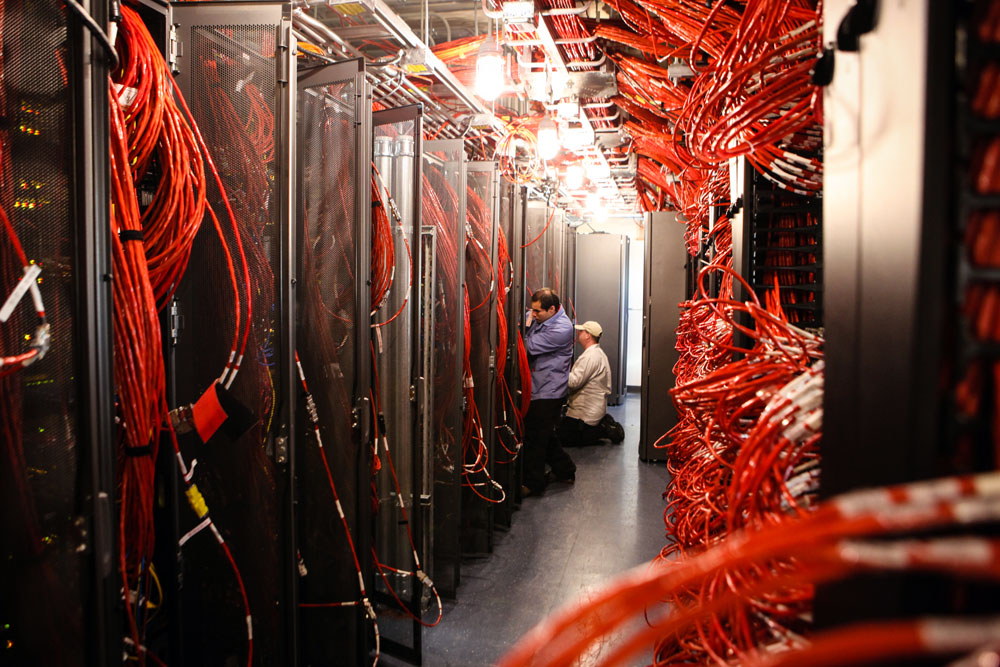|
NetworkingWorkshop brings together polar scientists and cyberinfrastructure expertsPosted December 13, 2013
Antarctica is not as remote as it once was. Planes reduce travel time to the southernmost continent to just a few hours. It’s possible to exchange instant messages from McMurdo Station Still, the computer power of researchers working in the polar regions – the ability to generate, transmit, analyze and access data – lags in a number of ways. “A lot of it comes down to the remoteness of the regions,” noted Jonathan Pundsack The workshop brought together more than 60 polar researchers and computer scientists to discuss the needs of the former and to learn how the latter can enable a more robust cyberinfrastructure (CI) in the future. “We’re trying to help science move at a faster pace and make discoveries that wouldn’t be possible without the combination of the two,” said Marco Tedesco Tedesco said the September workshop was the first of what he hopes are a series of meetings between scientists representing various disciplines and computer experts that will result in a long-term collaborative effort to build and sustain the sort of cyberinfrastructure needed in the Antarctic and Arctic. Discussions ranged from big data – increasingly big, complex and unwieldy datasets – to supercomputers to education and training. A report from the workshop “The workshop was fantastic. There was a lot of interaction among the two groups,” Tedesco said, noting that it was important for computer scientists to understand the needs – and challenges – of researchers in the field. Photo Credit: Nick Powell/Antarctic Photo Library
The South Pole MARISAT-GOES Terminal/RF Building complex is the primary facility supporting intra- and intercontinental communications.
“Field experience is invaluable in obtaining an understanding of what can and cannot be taken for granted in Antarctica in comparison to the stateside laboratory environment,” said John Helly In his role at the San Diego Supercomputer Center, Helly and his team conduct research in the application of high-performance computing resources to environmental and earth science problems, ranging from data acquisition to modeling and analysis. He has also participated in Antarctic fieldwork aboard research vessels on a project studying the ephemeral marine ecosystems created by melting, drifting icebergs. [See previous article — The hotspot: Icebergs become source of nutrients for biological communities as they melt.] “The polar CI effort is not different than most of the other workshops that I’ve participated in general terms, although the focus on data-sharing and providing open-access to federally funded scientific data is a big shift in the culture,” Helly said. “It’s one we’ve been ambling toward for a long time, but the climate change debate really crystallized it at a societal level.” Pundsack said the workshop particularly focused on data – “everything is data, data, data” – especially on its generation, storage, accessibility and searchability. Noted Tedesco: “You can have the best data in the world, but it becomes useless if it is not used – and to be used needs to be discovered.” Another bottleneck for researchers in Antarctica is bandwidth – the ability to transmit gigabytes, even petabytes, of data from research vessels, remote observatories, and even the South Pole Station, which, due to its high latitude, has limited connectivity to satellite communications. Four main priorities for the next two years emerged from the workshop, which Pundsack summarized:
Tedesco said he wants the polar research community to be aware that there is a place within the Division of Polar Programs to support polar cyberinfrastructure. He added that while the report from the first workshop will provide community input to the cyberinfrastructure program in the near-term, other ideas are, obviously, also welcome. “Community building is very important at this moment,” he said. For more information, visit the workshop website |



For USAP Participants |
For The Public |
For Researchers and EducatorsContact UsU.S. National Science FoundationOffice of Polar Programs Geosciences Directorate 2415 Eisenhower Avenue, Suite W7100 Alexandria, VA 22314 Sign up for the NSF Office of Polar Programs newsletter and events. Feedback Form |


